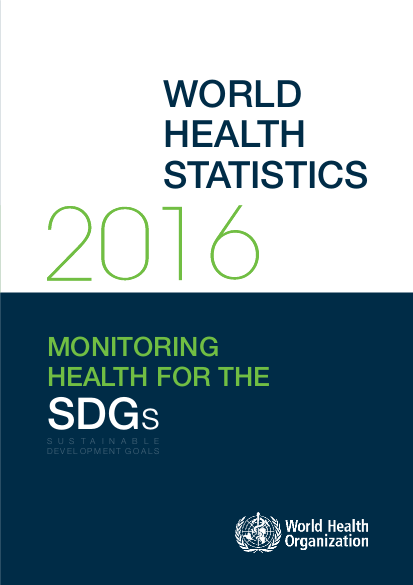
This report brings together the most recent data on the proposed health and selected health-related SDG indicators – to assess the current situation and describe crucial data gaps. In the current absence of official goal-level indicators, summary measures of health such as (healthy) life expectancy are used to provide a general assessment of the situation. As universal health coverage (UHC) is a central concern, statistics are presented on a service-coverage index and on measures of financial protection using the WHO/World Bank UHC monitoring framework. In relation to equity, special attention is given to describing the statistical situation disaggregated by key demographic, geographic and socioeconomic characteristics. Because the 2030 Agenda emphasizes the interlinked nature of all the various goals, this report also includes indicators of selected health determinants and risk factors in relation to other SDG targets. More work is required to fully integrate monitoring the health dimension in other goals.
Available data show that in spite of the major progress during the Millennium Development Goal (MDG) era, major challenges remain in terms of reducing maternal and child mortality, improving nutrition, and achieving further progress in the battle against infectious diseases such as HIV/AIDS, tuberculosis, malaria, neglected tropical diseases and hepatitis. The situation analysis also provides evidence of the importance of addressing noncommunicable diseases and their risk factors such as tobacco use, mental health problems, road traffic injuries, and environmental health issues. Data on water and sanitation and air quality show that much more needs to be done to reduce risks to health. Weak health systems are a major obstacle in many countries, resulting in major deficiencies in UHC for even the most basic health services and inadequate preparedness for health emergencies.
This report shows that for most SDG health and health-related targets it is possible to provide an overview of the global situation and trends using a limited number of indicators. It, however, also shows that there are major data gaps for many indicators. For instance, several health and health-related indicators require regular, quality data on mortality by age, sex and cause of death, which are still lacking in most countries. The demand for comparable disaggregated statistics is particularly challenging for almost all indicators. These deficiencies will require major investments in strengthening country health information and statistical systems.